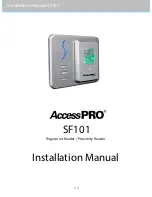
2-Port eSATA3 RAID PCIe Card
4
2.
Stripe Size:
Select the stripe block size. Options include 32 KB and
64 KB.
3.
Gigabyte Rounding:
Select whether to permit the installation of a
replacement drive that is smaller than the failed drive when
performing a RAID 1 rebuild. Options include None, 1G, and 10G.
4.
Quick Init:
Select whether to quickly erase old data on the hard
drives when creating the array.
5.
VD Name:
Enter an array name with 1~10 letters (letters cannot
be special characters).
6.
Next:
After completing the settings above, move to
Next
and
press <Enter> to begin creating the array. When prompted to
confirm whether to create this array, press <Y> to confirm or <N>
to cancel.
7.
When completed, you can see the new array under
Topology\Virtual Disks
.
8.
Save the Settings and Exit.
After you complete the RAID
configuration and before you exit the configuration screen, be
sure to press <F10> in the main screen. Press <Y> to confirm or <N>
to cancel.
9.
Now, you may proceed to create the SATA driver diskette (for
AHCI mode) and the installation of the SATA driver and operating
system
4.2 Delete the Disk Array:
To deleted the existing array, select the array on the main menu
(example: VD 0: New_VD) and press <Enter> to display the
Delete
option. Press <Enter>. When prompted, press <Y> to confirm or <N> to
cancel.
With the Marvell RAID utility (RAID GUI), you can setup an disk array or
view the current array status in the operating system. To install the
utility, insert the supplied driver CD (folders as the following picture).
5. Installing RAID Drivers and GUI























